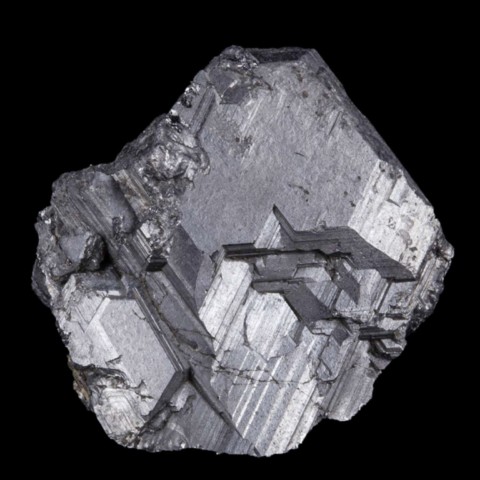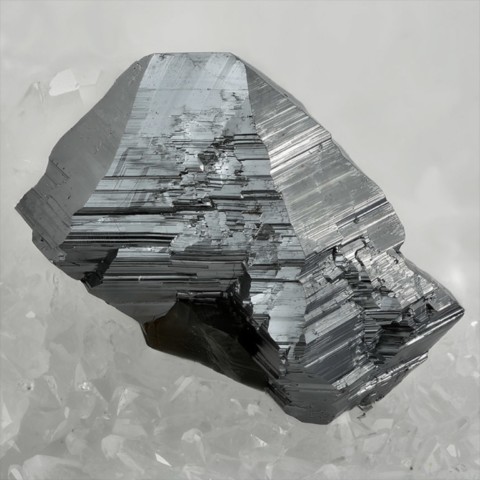JORDANITE
Class : Sulfides and sulfosalts
Subclass : Sulfosalts
Crystal system : Monoclinic
Chemistry : Pb14(As,Sb)6S23
Rarity : Rare
Jordanite is a rare lead sulfoarsenide, present in certain lead-zinc deposits, particularly those located in carbonate cap rocks. More rarely, it is found in carbonate rocks hydrothermalized by contact metamorphism (marble and dolomitic marbles). The presence of jordanite in the ore induces the formation of lead arsenates (particularly mimetite) in outcrops. Jordanite forms a continuous series with geocronite, its antimoniferous equivalent. It was named in honor of H. Jordan of Saarbruck in Germany who provided the definition samples. Jordanite forms pseudohexagonal tabular crystals, lead gray, opaque with a metallic luster, up to 4 cm. It also exists in fibroradiated masses, and in banding alternating with galena and sphalerite. It is a marginal lead ore.
Main photo : 4 cm jordanite from Lengenbach, Valais, Switzerland © Rock Currier
Jordanite in the World
Twinning
Twins are common on {001}, they can be lamellar on {-201}, rare on {-101} and on {101}.
Fakes and treatments
No fakes recorded for this mineral species.
Hardness : 3
Density : 6.33 to 6.43
Fracture : Conchoidal
Streak : Black
TP : Opaque
RI : -
Birefringence : -
Optical character : -
Pleochroism : None
Fluorescence : None
Solubility : Nitric acid
Magnetism : NoneRadioactivity : None





